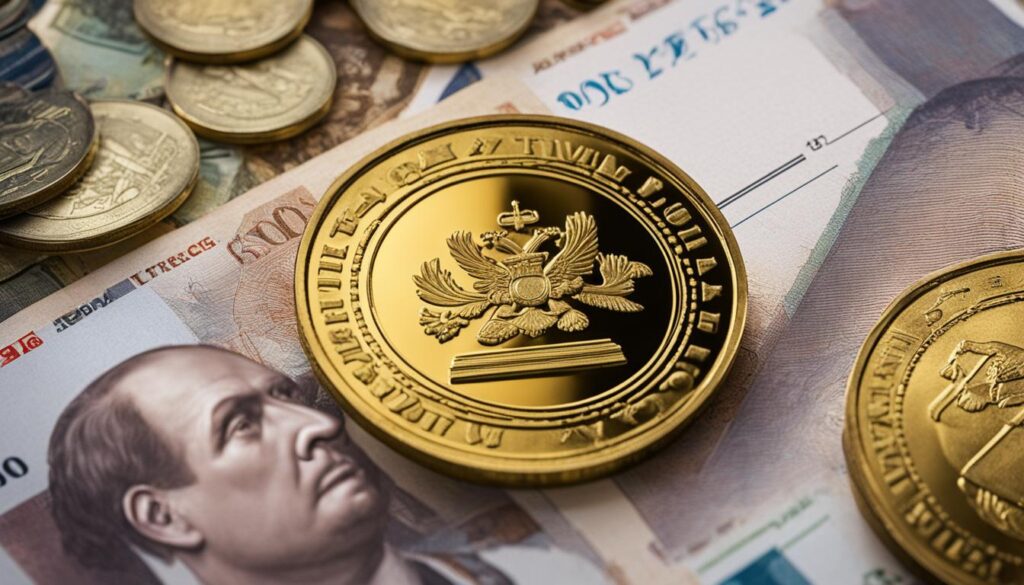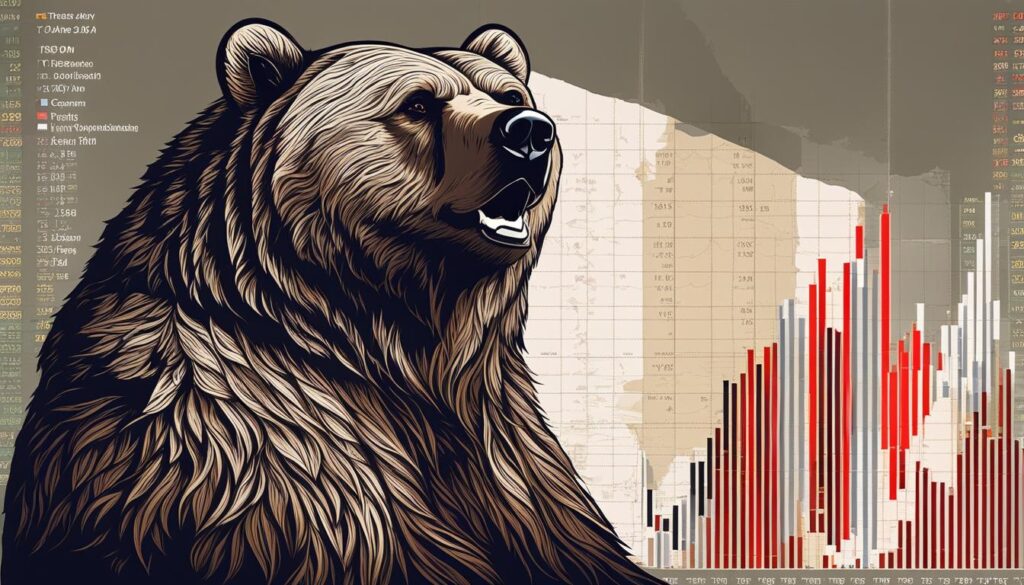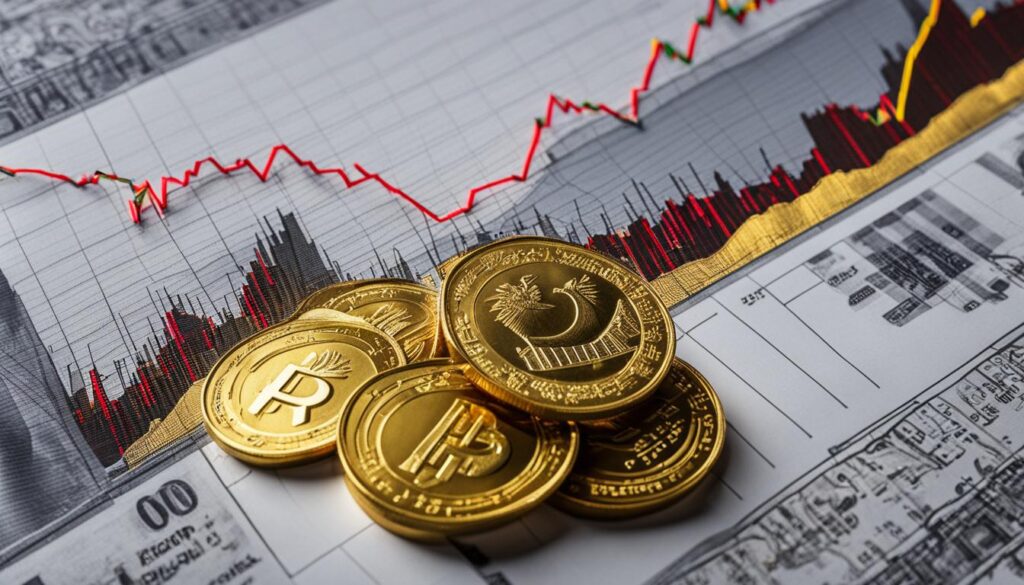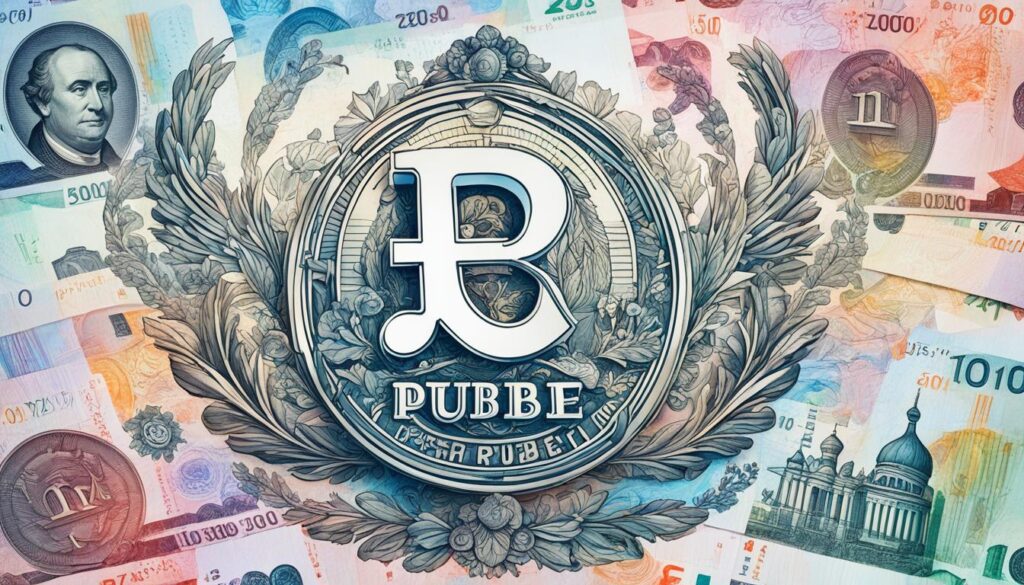Are you interested in delving into the world of forex trading? Specifically, are you intrigued by the opportunities presented by oil forex trading? If so, you’ve come to the right place. In this article, we will provide you with valuable insights into the world of oil forex trading, including strategies, analysis, and tips to help you navigate the dynamic forex market.
Forex trading, also known as foreign exchange trading, is the buying and selling of currencies to profit from exchange rate fluctuations. The forex market operates 24/7, making it accessible to traders worldwide. Oil forex trading focuses on trading currency pairs that are influenced by the price of oil, which is a vital global commodity.
Before diving into oil forex trading, it is crucial to understand the forex market and its various components. This includes learning about different forex brokers and their offerings, analyzing the factors that affect the oil price, and familiarizing yourself with energy and commodity trading.
To succeed in oil forex trading, you need effective forex strategies and reliable forex analysis. Trend following, range trading, and breakout trading are some popular strategies used by successful forex traders. Additionally, implementing risk management techniques is essential to protect your investments.
When it comes to trading the Russian Ruble, understanding the intricacies of this currency is crucial. The Ruble’s value is influenced by various factors such as oil prices, interest rates, political stability, and international sanctions. By studying economic indicators and geopolitical dynamics, you can gain valuable insights into the Ruble’s performance.
In the upcoming sections, we will explore the Russian Ruble in greater detail. We will discuss the factors that affect the Ruble’s value, analyze forex trading strategies specifically tailored for the Ruble, and provide tips to enhance your success in forex trading with this currency.
Unlock the potential of oil forex trading and discover the exciting opportunities that await you in the ever-evolving forex market. Stay tuned for more insights!
Introduction to Forex Trading
Forex trading is a global financial market where traders buy and sell currencies to generate profits. Conducted electronically over-the-counter, Forex operates 24/7, providing opportunities for traders around the world. Key currency pairs such as EUR/USD, GBP/USD, and USD/JPY are widely traded and often reflect global economic trends. Successful Forex traders employ various strategies such as trend following, range trading, and breakout trading to capitalize on market movements.
Risk management techniques, including the use of stop-loss orders and portfolio diversification, are crucial to safeguarding investments. By managing risk effectively, traders can mitigate potential losses and increase their chances of success in the Forex market.
To illustrate the scope and impact of Forex trading, let’s take a closer look at some major currency pairs:
| Currency Pair | Description |
|---|---|
| EUR/USD | The Euro against the US Dollar. This currency pair represents the exchange rate between the Eurozone and the United States. |
| GBP/USD | The British Pound against the US Dollar. This currency pair reflects the exchange rate between the United Kingdom and the United States. |
| USD/JPY | The US Dollar against the Japanese Yen. This currency pair indicates the exchange rate between the United States and Japan. |
Understanding these major currency pairs is essential for gaining insights into global economic trends and making informed trading decisions.
Understanding the Russian Ruble
The Russian Ruble plays a significant role in Forex trading, and it is crucial for traders to understand its dynamics. Several factors influence the value of the Ruble, making it a currency worth analyzing.
First and foremost, oil prices have a profound impact on the Ruble’s performance. As one of the world’s largest oil producers, Russia’s economy is closely tied to oil prices. Fluctuations in the price of oil can lead to volatility in the Ruble’s value.
The Central Bank of Russia also plays a crucial role in shaping the Ruble’s value. The bank’s interest rate decisions can influence investor sentiment and impact the currency’s performance in the Forex market.
Additionally, geopolitical risks, government policies, and economic stability are essential considerations when trading the Russian Ruble. Political events and policies can have a direct impact on the currency’s value, making it necessary for traders to stay informed about these developments.
To gain a better understanding of the Ruble’s volatility, it is valuable to look at historical trends. One notable event in recent history is the Ruble devaluation in 2014, followed by its recovery in 2016. These events provide insights into the Ruble’s resilience and susceptibility to external factors.
By comprehending the various factors that impact the Russian Ruble, Forex traders can make informed decisions and develop effective trading strategies.

| Year | Ruble Value |
|---|---|
| 2014 | Devaluation |
| 2015 | – |
| 2016 | Recovery |
| 2017 | – |
Factors Affecting the Russian Ruble in Forex Trading
Economic factors, oil prices, political stability, international sanctions, and market sentiment all play a significant role in influencing the value of the Russian Ruble in Forex trading.
One of the key economic factors impacting the Ruble is GDP growth. Strong economic performance, indicated by higher GDP growth rates, tends to strengthen the Ruble. Conversely, low GDP growth can weaken the currency.
Inflation rates also have a significant effect on the Ruble. Higher inflation can erode the purchasing power of the currency, leading to depreciation. In contrast, low inflation rates can support the Ruble’s value.
Employment levels are another important economic factor to consider. Low unemployment rates generally contribute to a stronger currency, as they reflect a healthy and robust economy.
Interest rates set by the Central Bank of Russia influence the Ruble’s value as well. Higher interest rates can attract foreign investors seeking higher returns, increasing demand for the Ruble and strengthening its value.
Given Russia’s position as a major oil producer, oil prices have a significant impact on the Ruble. Fluctuations in oil prices can lead to volatility in the Ruble’s value, as its economy is heavily reliant on oil exports.
Political stability is important for a stable currency. Factors such as government policies and geopolitical risks can affect the Ruble’s performance in Forex trading. For instance, the imposition of international sanctions can result in a depreciating Ruble.
Market sentiment, or the overall attitude of traders and investors, can have a profound impact on the Ruble. Positive market sentiment, driven by optimism and confidence, can lead to an appreciation of the currency. Conversely, negative market sentiment can weaken the Ruble.
Understanding these factors and their influence on the Russian Ruble is crucial for successful Forex trading. Traders should carefully analyze economic data, closely monitor oil prices, stay up to date with political developments, consider international sanctions, and gauge market sentiment to make informed trading decisions.

| Strategy | Description | Applicability to Russian Ruble |
|---|---|---|
| Trend Following | Identifying and trading in the direction of a prevailing trend | Can be applied by analyzing the Ruble’s current trend and entering trades accordingly |
| Range Trading | Profiting from price oscillations within a specific range | Effective when identifying key support and resistance levels in the Ruble’s price chart |
| Breakout Trading | Taking advantage of price movements beyond key levels of support or resistance | Requires monitoring consolidation patterns and entering trades when breakouts occur |
Tips for Successful Forex Trading with the Russian Ruble
To enhance success in Forex trading with the Russian Ruble, it is important to follow these tips:
- Develop a solid trading plan: Before entering the market, create a well-defined trading plan that outlines your goals, risk tolerance, and strategies. This will help you stay focused and make informed trading decisions.
- Stay informed about economic news and market trends: Keep track of the latest economic indicators, geopolitical events, and news related to Russia and the oil industry. Understanding these factors will allow you to anticipate market movements and make better trading decisions.
- Practice with a demo account: Before risking real money, practice trading the Russian Ruble with a demo account. This will give you the opportunity to test your trading strategies, familiarize yourself with the trading platform, and gain confidence.
- Manage emotions like fear and greed: Emotions can cloud judgment and lead to irrational trading decisions. Develop discipline and learn to control emotions like fear and greed. Stick to your trading plan and avoid making impulsive trades based on emotions.
- Exercise patience, perseverance, and continuous learning: Forex trading is a journey that requires time and dedication. Be patient, as success may not happen overnight. Persevere through challenges and losses, and continue to educate yourself about Forex trading strategies and market dynamics.
By following these tips, you can increase your chances of success in Forex trading with the Russian Ruble.

Profiting from Russian Ruble Forex Trading
When it comes to profiting from Russian Ruble Forex trading, accurate analysis of economic factors and market trends is crucial. Traders who can identify and understand the key drivers behind the Ruble’s movements have the potential to capitalize on market opportunities and generate profits.
By monitoring economic indicators such as GDP growth, inflation rates, and interest rates in Russia, traders can gain valuable insights into the Ruble’s performance. Additionally, staying informed about geopolitical developments, political stability, and international sanctions that may impact the Ruble is essential for making informed trading decisions.
Understanding the correlation between oil prices and the Ruble is also paramount. Given Russia’s position as a major oil producer, fluctuations in oil prices can significantly influence the Ruble’s value. Traders who keep a close eye on oil price movements and their impact on the Ruble are better positioned to make profitable trades.
Implementing effective trading strategies tailored to the Russian Ruble is another key factor in profiting from Ruble Forex trading. Trend following, range trading, and breakout trading strategies can all be applied to the Ruble with careful analysis of historical data and market trends.
“Profiting from Russian Ruble Forex trading requires a combination of thorough research, analysis, and strategic decision-making. Traders must stay informed, adapt to changing market conditions, and have the discipline to execute their trading strategies effectively.”
Trading the Russian Ruble – A Strategy Guide
- Analyze economic factors: Monitor indicators such as GDP growth, inflation rates, and interest rates.
- Stay informed: Keep track of geopolitical developments, political stability, and international sanctions.
- Understand oil prices: Consider the correlation between oil prices and the Ruble’s value.
- Implement trading strategies: Apply trend following, range trading, or breakout trading strategies to the Ruble.
- Manage risks: Utilize risk management techniques like stop-loss orders and portfolio diversification.
To further illustrate the potential for profiting from Russian Ruble Forex trading, consider the following table:
| Year | Oil Price | Ruble Exchange Rate | Profitability |
|---|---|---|---|
| 2015 | $50 | 60 | +15% |
| 2016 | $70 | 65 | +30% |
| 2017 | $60 | 70 | -5% |
| 2018 | $80 | 75 | +20% |
As shown in the table above, traders who correctly predicted the Ruble’s movement in relation to oil prices were able to generate profitable returns. By leveraging their understanding of economic factors, market trends, and effective trading strategies, traders can unlock the potential for profit in Russian Ruble Forex trading.

Unleashing the Potential of Forex Trading with the Russian Ruble
Forex trading offers immense potential for profitable investment opportunities, and one currency that holds unique prospects is the Russian Ruble. With its close ties to oil prices, political stability, and economic developments, the Ruble provides traders with exciting avenues for financial growth.
Understanding the dynamics of the Ruble is essential for unlocking its potential in Forex trading. As a major oil producer, Russia’s economy heavily relies on oil prices. Therefore, fluctuations in the global oil market can significantly impact the Ruble’s value. Traders who can accurately analyze and predict oil prices can leverage this knowledge to make informed trading decisions.
Political stability also plays a crucial role in shaping the Ruble’s performance. Factors such as government policies, international sanctions, and geopolitical risks contribute to the currency’s movement in the Forex market. Traders who stay informed about political developments and their potential impact on the Ruble can gain a competitive edge.
Economic developments are another key factor that affects the Ruble in Forex trading. Factors such as GDP growth, inflation rates, and interest rates set by the Central Bank of Russia can influence the currency’s value. By keeping a close eye on economic indicators and trends, traders can identify opportunities and make strategic trading decisions.
To fully take advantage of the Ruble’s potential, traders must employ effective trading strategies. Trend following, range trading, and breakout trading are popular approaches that can be applied to Ruble trading. These strategies require careful analysis of economic factors, market trends, and technical indicators to help predict favorable entry and exit points.
In addition to strategy, risk management is critical when trading the Ruble. Implementing stop-loss orders, diversifying portfolios, and staying disciplined are essential to mitigate potential losses and protect investment capital.
By combining a thorough understanding of the Ruble’s dynamics with effective trading strategies and risk management techniques, traders can unleash the full potential of Forex trading with the Russian Ruble. The Ruble’s close ties to oil prices, political stability, and economic developments make it a compelling and profitable currency to trade in the Forex market.
| Benefits of Forex Trading with the Russian Ruble | Factors Influencing the Ruble’s Performance |
|---|---|
|
|
Unlock the potential of Forex trading with the Russian Ruble and seize the opportunities presented by oil prices, political stability, and economic developments. By staying informed, employing effective strategies, and managing risks, traders can navigate the Forex market successfully and achieve financial growth.

The Evolution of Forex Trading in 2023
Forex trading in 2023 is witnessing rapid advancements driven by technology. The introduction of automated trading systems and the use of artificial intelligence (AI) have revolutionized the industry. Traders now have access to sophisticated algorithms that can analyze large amounts of data and execute trades with speed and precision. These technological advancements have greatly increased efficiency and allowed traders to capitalize on market opportunities.
Another significant development in the Forex market is the rise of cryptocurrencies. The popularity of digital currencies like Bitcoin and Ethereum has had a profound impact on trading dynamics. Cryptocurrencies offer alternative investment opportunities and have introduced new trading pairs. Traders can now speculate on the price movements of cryptocurrencies against traditional fiat currencies, adding a layer of diversity to their trading strategies.
Regulatory changes have also played a crucial role in shaping the future of Forex trading. As the market continues to grow, regulators have implemented measures to enhance market integrity and protect traders. Stricter compliance requirements and increased transparency standards aim to create a safer trading environment. These changes provide traders with greater confidence and instill trust in the Forex market.
The evolution of Forex trading in 2023 presents both challenges and opportunities for traders. While technological advancements and the rise of cryptocurrencies offer new avenues for profit, they also require traders to adapt and stay updated with the latest trends. Furthermore, regulatory changes may introduce additional complexities, but they ultimately aim to foster a fair and secure trading environment. Keeping a finger on the pulse of these developments will be key to thriving in the ever-evolving world of Forex trading.